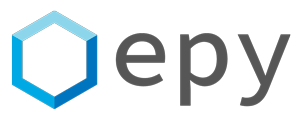By Ziannah Pasion
On 25 June 2025, ECHA announced the inclusion of three new substances in the Candidate List of substances of very high concern (SVHCs) under the REACH Regulation. With this update, the list now contains 250 entries. The newly added substances are:
| Substance name | EC number | CAS number | Reason for inclusion | Examples of uses |
|---|---|---|---|---|
| 1,1,1,3,5,5,5-heptamethyl-3-[(trimethylsilyl)oxy]trisiloxane | 241-867-7 | 17928-28-8 | Very persistent and very bioaccumulative, vPvB (Article 57e) | Used as a laboratory reagent, in cosmetics and personal care products, and in perfumes and fragrances |
| Decamethyltetrasiloxane | 205-491-7 | 141-62-8 | Very persistent and very bioaccumulative, vPvB (Article 57e) | Used in cosmetics and personal care products, in lubricants and greases, and in automotive care products |
| Tetra(sodium/potassium) 7-[(E)-{2-acetamido-4-[(E)-(4-{[4-chloro-6-({2-[(4-fluoro-6-{[4-(vinylsulfonyl)phenyl]amino}-1,3,5-triazine-2-yl)amino]propyl}amino)-1,3,5-triazine-2-yl]amino}-5-sulfonato-1-naphthyl)diazenyl]-5-methoxyphenyl}diazenyl]-1,3,6-naphthalenetrisulfonate; Reactive Brown 51 | 466-490-7 | – | Toxic for reproduction (Article 57c) | Used in textile treatment products and dyes |
Where are these substances found and why are they relevant?
These substances are used in a wide range of consumer goods—from automotive components to cosmetic products. Their inclusion in the Candidate List introduces new responsibilities, such as the duty to communicate information downstream in the supply chain and to notify ECHA if present in articles above 0.1% w/w.
Compliance and Communication Implications
Being listed as an SVHC is the first step toward possible restriction or authorisation. Companies must carefully map the presence of these substances in their products and processes, update their Safety Data Sheets (SDS), and ensure transparency throughout the supply chain. Failing to meet these obligations can pose serious legal and reputational risks.
How EPY simplifies Candidate List management
With EPY, companies can rest assured: the software automatically detects substances from the Candidate List present at concentrations ≥ 0.1%, and clearly flags their presence in the SDS. The update to include the three new SVHCs will be released shortly to all clients, ensuring that substance management stays aligned with the latest regulatory developments. This means time savings, accuracy in regulatory documents, and greater peace of mind when it comes to compliance.



